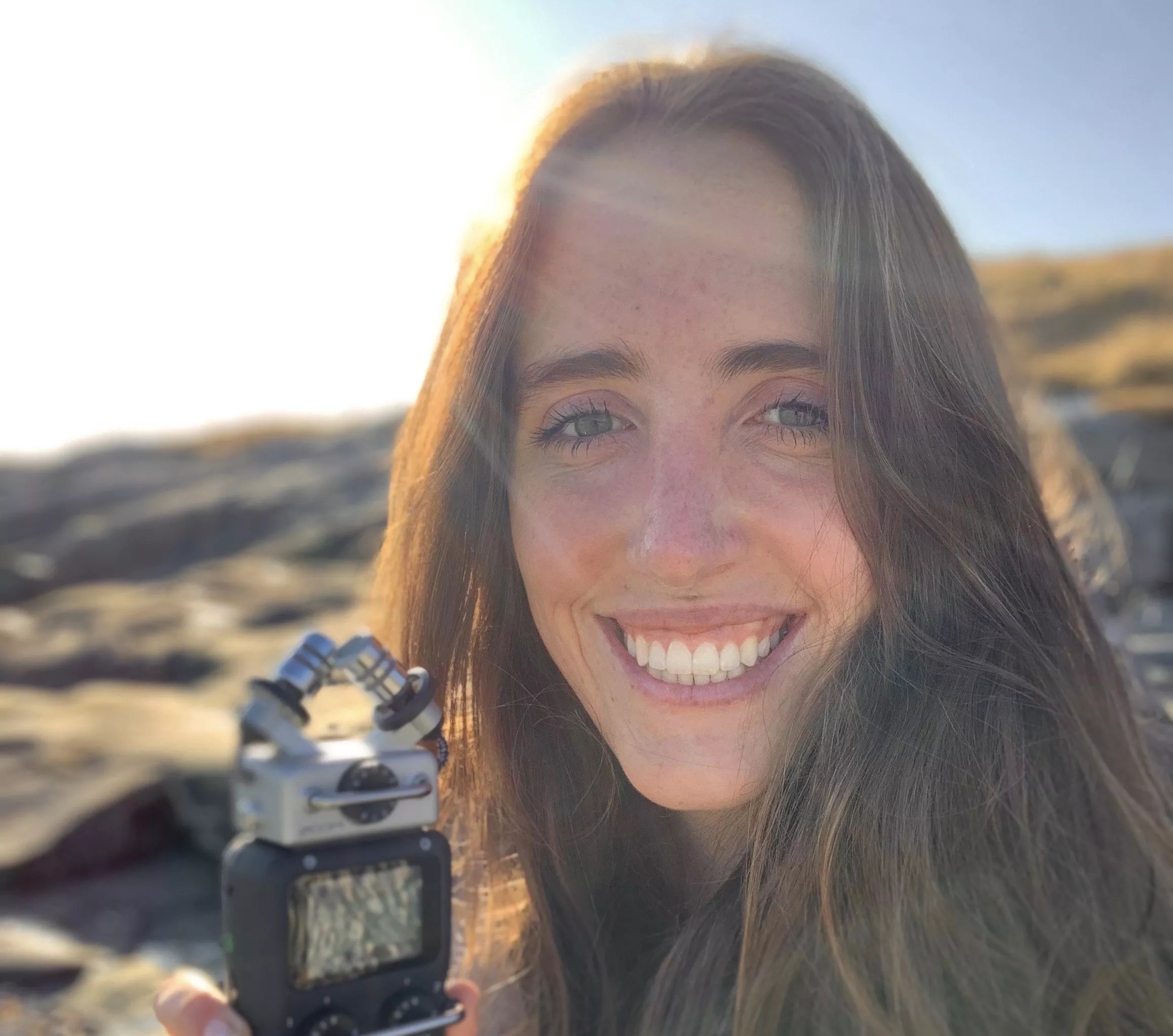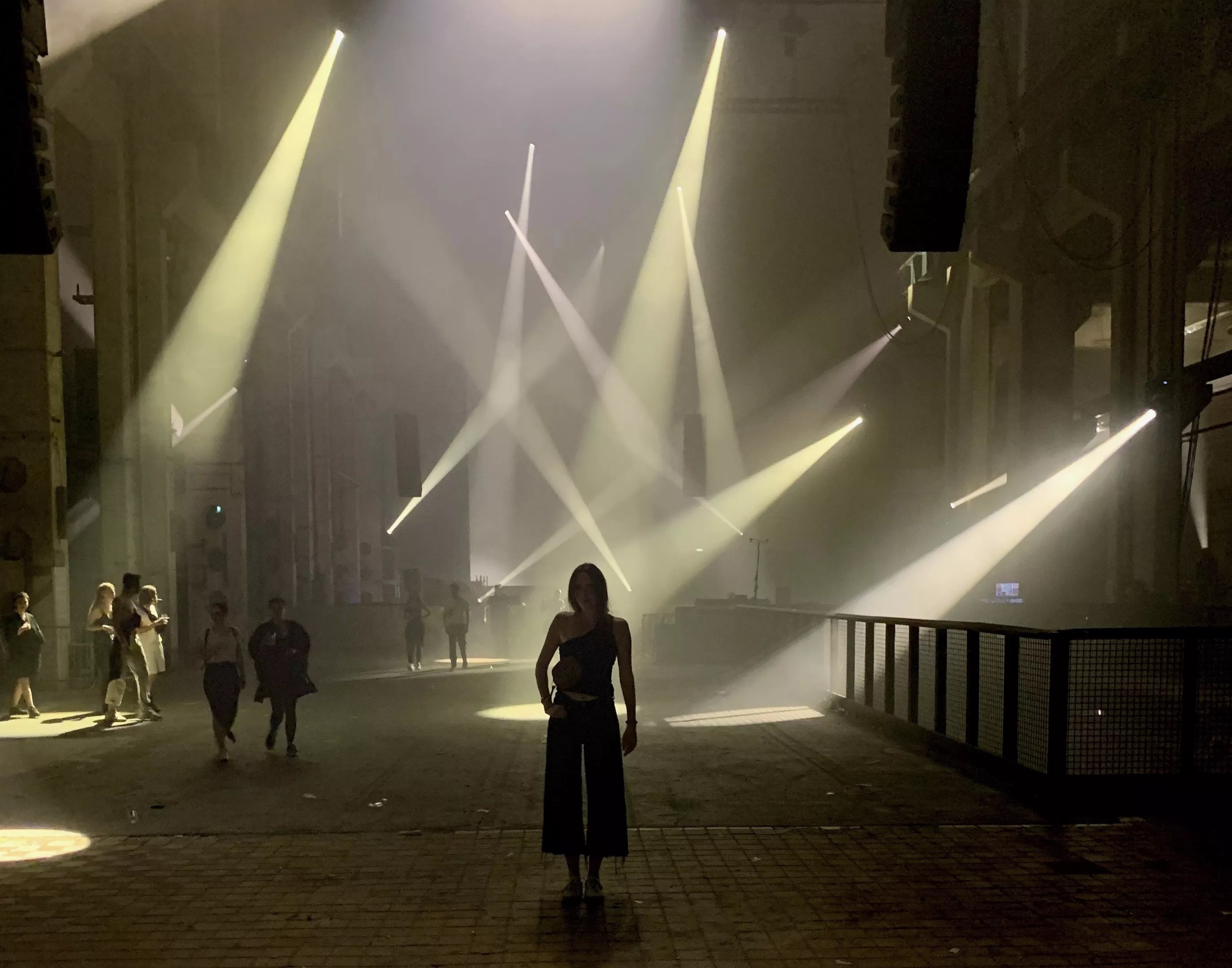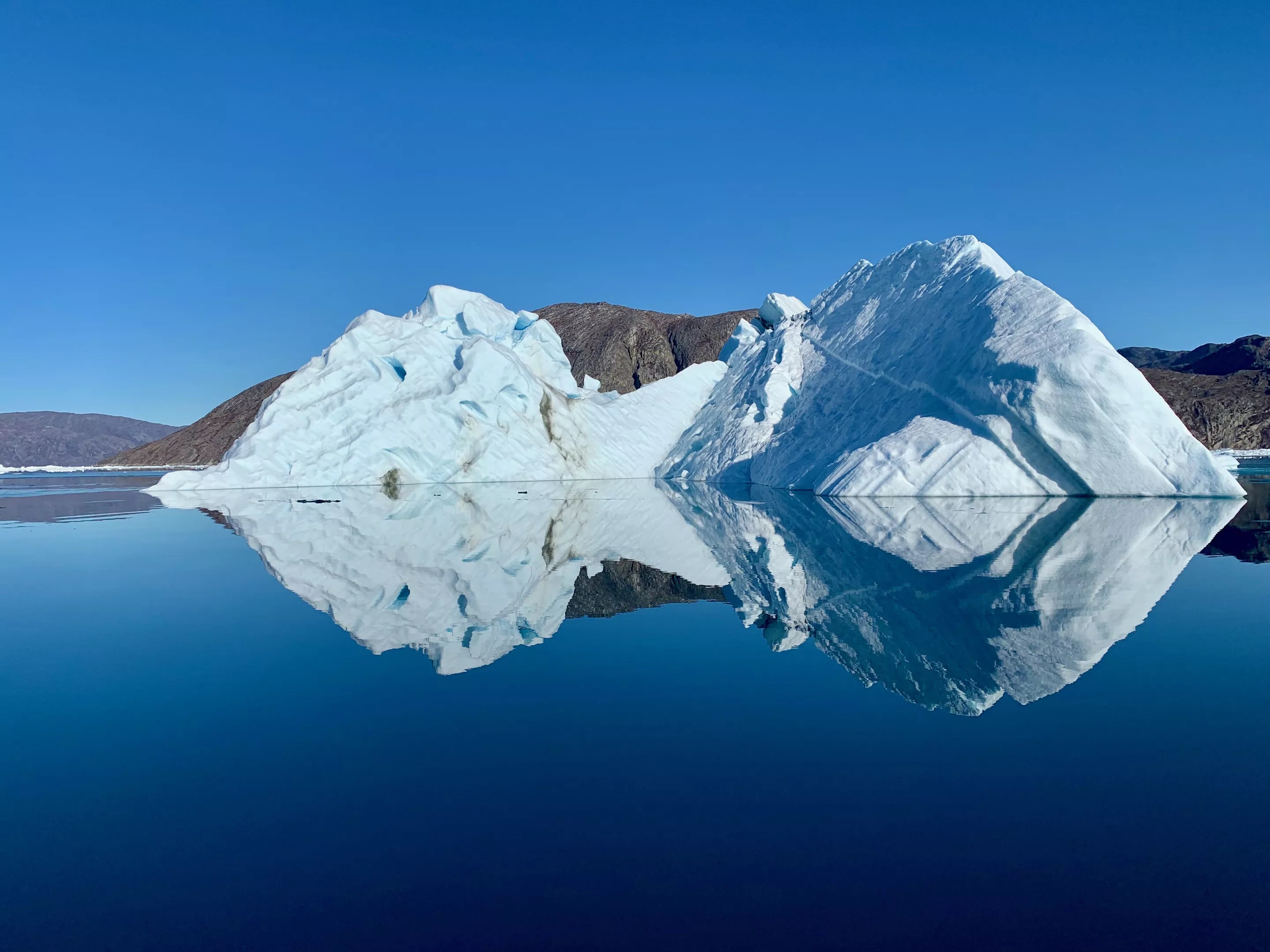
@fi_sounds

Audio By Carbonatix
Fi Sullivan has been on a worldwide journey, experimenting with natural sounds in electronic music.
The 24-year-old Colorado native began singing at the age of four. She hadn’t thought about writing her own songs until her senior year at Denver’s East High School, when, as part of the Angelaires vocal jazz choir, she participated in an exercise called Circle Song. Choir members would go into the center of the group, close their eyes and compose a melody, beat or lyrical line. Then the other members of the eleven-person choir would improvise and follow along, blending and harmonizing their voices.
“It was my favorite thing to do,” Sullivan says. “I loved trying to create and think of original, beautiful, layered vocal pieces.”
The summer before Sullivan began classes at Middlebury College in Vermont, she worked for Timothy Weaver, professor of emergent digital practices at the University of Denver, on his live-cinema piece “The Whalefall.” Weaver asked Sullivan to sing and improvise with whale sounds recorded from around the world. She had never done anything that experimental, but quickly found meaning in harmonizing and improvising with the animals.
The following summer, she enrolled in a class on electronic music production through the Berklee College of Music. There, she fell in love with the intersection of music and technology.
“I felt like I could re-create my circle song from high school with my own voice and new effects,” she explains. “It was amazing. I fell into a flow and completely lost myself in a myriad of musical compositions.”
Sullivan took advantage of the music courses and programs at Middlebury, learning how to use software like Ableton Live and Max MSP with professors Peter Hamlin and Matthew Evan Taylor. She programmed boutique Max patches for her voice, creating sonic environments and cave-like atmospheres with electronic modifications. She then paired those soundscapes with live instruments.
“It was the first time I truly discovered how I could interact with my voice in this mystifying, generative atmosphere that’s a little unpredictable – and all in real time,” Sullivan says. “But it was also really exciting, because it allowed me to generate new sounds I never knew I could create.”
As a junior, she studied abroad at Goldsmiths, University of London, where she experimented with modulation, sound frequencies and randomly generated sonic elements created by mathematical processes. Her work mixed weather patterns, algorithms, jazz standards and audiovisuals.
Back on campus in Vermont, Sullivan formed a small band with her fellow jazz bandmates. She describes a breakthrough moment performing at Middlebury’s student-run arts festival, Nocturne; while she was mixing boutique Max patches with Ableton Live and live instruments, flocks of students got up to dance. At that moment, she knew she wanted to pursue live performance.
“I love the rush, the movement of people dancing,” she says. “I just enter this zone, and it’s thrilling.”
Sullivan was a 2019 recipient of the Thomas J. Watson Fellowship, a one-year research grant awarded to graduating seniors at 41 partnering colleges; fellows come up with original projects, then plan where in the world they will travel and who they will meet with during those travels. With the $36,000 grant, she was able to take her passion for music and technology to new dimensions.
In a project titled “Intersections of Technology and Human Vocal Continuity,” Sullivan explored contemporary sonic spaces and musical communities, engaging in cultural dialogue about how audiation leads to new types of sound. She tried to answer questions about how technology impacts the human voice, how it affects vocal traditions, and how it connects to other types of artistic expression.
During her research year, Sullivan traveled around the world, immersing herself in culture, performing and meeting up-and-coming artists.

Sullivan at the Atonal Festival in Berlin.
@fi_sounds
In Berlin, she performed in a squatted music venue in an abandoned space with her homemade electro-magnetic antenna that could pick up and amplify any sound, from radios to text-message alerts. She describes an improvised noise performance where she and others ran around a room trying to pick up sound waves with FM radios. She then attended the Berlin Atonal Festival, where she was inspired by sonic and visual performances by artists from all over the world.
In Linz, Austria, Sullivan attended the Ars Electronica Festival at POSTCITY Linz, an abandoned postal distribution center turned event venue. She watched AI systems mixed with performance and met artists such as Madeleine Bloom and Reeps 100, who both use different technologies to augment their voices.
Greenland was one of Sullivan’s favorite destinations because she was able to volunteer and perform at the Nuuk Nordisk Kulturfestival. She got to know a community of artists and others while learning about the culture of Nuuk, a city rich with Greenlandic, Faroese and Danish cultural interactions. She woke up to icebergs floating by her window, ate reindeer, watched the Northern Lights, participated in an all-artist improvisational concert at the National Theatre of Greenland, and performed her songs at an indoor swimming pool as well as at local museums and nightclubs. She was also inspired by Greenlandic and Faroese mythology.

Some of the scenery that Sullivan woke to each morning during her time in Nuuk.
@fi_sounds
In Dublin, she explored folk music and poetry. At The Hague, she delved into soundscapes with Stephanie Pan. In Canberra, Australia, she experimented with algorave – an event where people dance to music generated from algorithms created from on-the-fly programming – collaborating with Dr. Benjamin Swift, Dr. Charles Martin and Kieran Browne of the code/creativity/culture studio at the Australian National University. And in Buenos Aires, she discovered more diverse electronic styles.
Sullivan’s travels were cut short in March, when the pandemic upended travel, but she plans to use her remaining Watson funds to continue her research and performances in Scandinavia in the coming year.
Following her travels, Sullivan wants to perform, compose and write music, and see where her journey takes her. “I really have so much passion for this experimental sound space and, specifically, research in technology as a means to extend the human voice,” she says.
Sullivan hopes to ultimately produce electro-pop songs that people want to dance and move to, mixed with avant-garde sounds.
“My dream is to connect the experimental electronic world that I love so much with the equally loved performance-based pop-music and dance world,” she says. “I want to create an intersection between both that propels me into new sonic realms and experiences. I can’t wait to get back out there and perform.”
For now, Sullivan is living in Denver, working on a new EP, Shades of Forest, which she plans to release in early March. It will be much like the rest of her work: jazzy techno-pop, influenced by natural sounds colliding with mathematical algorithms and ethereal layered vocals.
As she writes, she remembers what it was like to sing, dance and be with others before the pandemic. She stays up late, composing and dreaming about getting back on stage.
“It feels like a dazed yet chaotic yet creative artistic incubation period,” she says, laughing.
Sullivan recently released a new single titled “We’re Not Alone.” She started writing the song in Dublin and finished it while in Canberra during the time of the bush fires. On the track, her deep, layered vocals rise over a looped techno background, creating a unique, thoroughly researched sound.
“What I love about the voice is that it’s this inherent instrument each of us carry,” she says. “It’s this incredible means of creativity and connection and freedom. A total expression for human existence.”
Hear more at Fi Sullivan’s website.